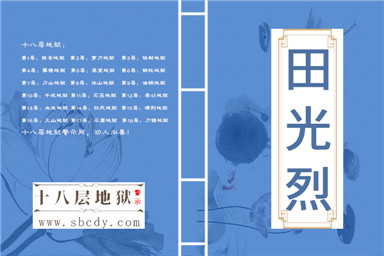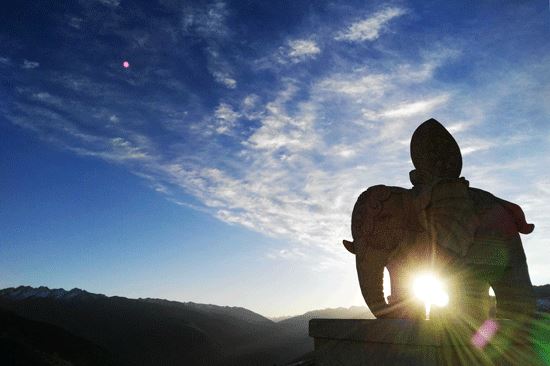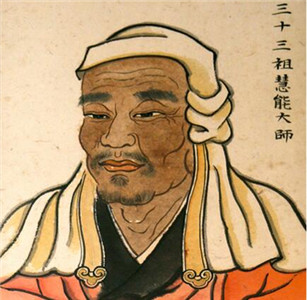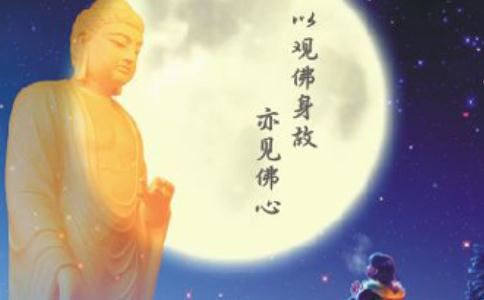田光烈:禅宗六祖得法偈之我见
 2024-09-15
2024-09-15 

对《金明馆丛稿》的两点质疑
偶阅《金明馆丛稿二编禅宗六祖传法偈之分析》,惊叹不已!作者是着名的史学家,写了不少脍炙人口的论文和专着,不应舛谬至此;抑因作者对佛法有成见,不惜吹毛求疵,致谤佛法、凌先哲、掩众明于不顾。因撰此文,以资商榷。孟氏有云:余岂好辩哉,余不得已也。
作者一开始便据敦煌本《坛经》之文,列举神秀偈云:身是菩提树,心如明镜台,时时勤拂拭,莫使有尘埃。惠能二偈,一曰:菩提本无树,明镜亦非台。佛性常清净,何处有尘埃。二曰:心是菩提树,身为明镜台,明镜本清净,何处染尘埃。并云:古今读此传法偈者众矣,似皆未甚注意二事:一、此偈之譬喻不适当;二、此偈之意义未完备。
首先谈此偈之譬喻不适当的问题。
何谓譬喻不适当?作者认为印度禅学,其观身之法,往往比人身于芭蕉等易于解剖之植物,以说明阴蕴俱空,肉体可厌之意。作者举四经为例:一、鸠摩罗什译《摩诃般若波罗蜜经善达品》;二、玄奘译《大般若波罗蜜经善达品》(前经同本异译);三、鸠摩罗什等译《禅秘要法经》;四、沮渠京声译《治禅病秘要经》。说四经都比身如芭蕉。按身梵语伽耶(kaya),即和合积聚的意义。故《瑜伽师地论》卷三云:诸根所随,周遍积聚,故名为身。身以五蕴(旧译为五阴)和合积聚为体,五蕴谓色、受、想、行、识。色是物质界,受、想、行、识属精神界,凡夫之身是物质与精神和合的积聚体(佛则以法为身,《华严经》所谓佛以法为身,清净如虚空是也)。作者所引两种《般若经》中所谓行如芭蕉叶的行,即五蕴中的行蕴,行乃思之别名,为心所法之一,五十一心所中,除受、想外,其余心所法及心不相应行法,均行蕴所摄,除色心分位之心不相应行法之外,总属精神界,精神与物质和合之身,变灭无常,这是作者承认的。不过作者认为传法偈中所谓菩提树者,乃一树之专称,释迦牟尼曾坐其下,而成正觉者。玄奘《西域记》八《摩揭国》上云:金刚座上菩提树者,即毕钵罗之树也。昔佛在世高数百尺。屡经残伐,犹高四五丈。佛坐其下,成等正觉,因而谓之菩提焉。茎干黄白,枝叶青翠,冬夏不凋,光鲜无变。据此,可知菩提树为永久坚牢之宝树,决不能取以比譬变灭无常之肉身,致反乎重心神而轻肉体之教义,此所谓譬喻不适当者也。
案菩提树即毕钵罗pippala树,系桑科榕树乔木,学名ficusrehgiosa,因佛陀在毕钵罗树下金刚座悟道成佛,该树遂称菩提(梵文bodhi,义为觉)树。《面阳杂俎》前集卷十八:菩提树出摩伽陀国,在摩诃菩提寺。盖释迦如来成道时树,一名思惟树,茎干黄白,枝叶青翠,经冬不凋。至佛人灭日,变色凋落,过已还生(转引自《大唐西域记校注》123页)。作者引《西域记》的后面还有三句:每至如来涅槃之日,叶皆凋落,顷之复故。作者为了说菩提树是永久坚牢之宝树,不惜断章取义,在引用时,便把菩提树时而凋落,时而复故变化无常的原文删掉了。在世法中,佛教不承认有永久坚牢的东西,诸行无常,是生灭法,这是三乘通义。有情世间,不出生住异灭;器世间,不外成住坏空,何尝永久坚牢。作者断言菩提树为永久坚牢之宝树,决不能取以比譬变灭无常之肉身。这是断章取义,这是对佛教教义的误解。
其次,佛法以事物喻身,灵活运用,亦不止芭蕉一种。除芭蕉外,散见于经论中喻身的事物,信手拈来,便有十种之多:一、身如师子相。乃佛三十二相之一;二、身如城。身者心之城廓也。《涅槃经》一云:头为殿堂,心王居中,如是身城,诸佛世尊所弃舍,凡夫愚人常所味着;三、身如云。《吽字义》云:毗卢遮那如来自受用故,化作种种神变,变现无量身云。言佛现种种之身蔽覆众生如云也;四、身如塔。大日之法生身,以塔婆为三昧耶形,故云身塔。《大日经疏》云:慈氏印如窣堵波形者,以一切如来法身塔故(塔婆即塔,梵名窣堵波。三昧耶有平等、誓愿、警觉、除垢障等义);五、身如口如眼。《大智度论》卷七云:佛世界中尊,得自在,能使一切身如口如眼;六、身如田。身能生善恶之业,如田地之能生百谷,故云身田。唐善导《转经行道愿往生净土法事赞》上云:大悲恩重,等润身田;七、身如座床。《宗镜录》二十六云:身座肉灯,归命供养;八、身如轮。世尊之身、语、意三业,如车轮之毂、辐、辋,三法和合而成一轮,轮有运载推破之功,故以为喻;九、身如器。《行事钞》上三之一云:身器清净。身能受诸法如器,故云身器;十、身以喻论。一切有部(萨婆多部)根本论七部中,《发智论》为身论,《集异门论》等六论为足论,所谓一身六足是也。见《俱舍论光记》。
此外作者引证的四种典据中,鸠摩罗什的竞有两种,占二分之一。而对罗什译的《维摩诘所说经》独不引证,如果援引,则往往比人身于芭蕉等易于解剖之植物之说,便不能成立。请看《维摩诘所说经方便品》是怎样比譬肉身的:
诸仁者,如此身明智者所不怙。是身如聚沫,不可撮摩;是身如泡,不得久立;是身如焰,从渴爱生;是身如芭蕉,中无有坚;是身如幻,从颠倒起;是身如梦,为虚妄见;是身如影,从业缘现;是身如响,属诸因缘;是身如浮云,须臾变灭;是身如电,念念不住;是身无主,为如地;是身无我,为如火;是身无寿,为如风;是身无人,为如水;是身不实,四大为家;是身为空,离我我所;是身无知,如草、木、瓦、砾;是身无作,风力所转;是身不净,秽恶充满;是身为虚伪,虽假以澡浴衣食,必归磨灭;是身为灾,百一病恼;是身如丘井(罗什云:丘井,丘墟枯井也。昔人有罪于王,其人怖罪逃走,王令醉象逐之,其人怖急自投枯井,半井得一腐草,以手执之。下有恶龙吐毒向之,傍有五毒蛇复欲加害,二鼠啮草,草复将断,大象临其上复欲取之。其人危苦,极大恐怖,上有一树,树上时有蜜滴,落其口中,以着味故而忘怖畏。喻众生得五欲蜜滴,不畏苦也。),为老所逼;是身无定,为要当死;是身如毒蛇、如怨贼、如空聚,阴界诸入所共合成。诸仁者,此可患厌,当乐佛身。所以者何?佛身者,即法身也。
这一段经文,以二十二种事物比譬肉身,芭蕉只是其中之一,大多数都不是易于解剖之植物。相对来说:其中如地、瓦砾、丘井等都比菩提树坚牢。从某种意义如经文所说:相对坚牢的东西,不是不能比譬肉身的。以上所言比譬肉身的事物,《维摩经》有二十二种,加上前面的十种,共有三十二种,芭蕉只是其中之一,安得以一概全。
其次,神秀、惠能二师所谓身、心究竟讲的什么身、什么心?还须作进一步的研究。我认为:神秀、惠能二师所谓身,决不是肉身,而是佛身,所谓心也决不是肉团心而是涅槃妙心。关于涅槃妙心,详见下文,这里只谈身。神秀所谓身是菩提树之义,决不是他的杜撰,其根据在旧《华严经》。该经说二种十身,即融三世十身与佛具十身。身是菩提树之身即佛具十身中之第一种菩提身。如下表:
试问:菩提身既为佛具之身,神秀非佛,安得擅以菩提树名身。其实菩提身人人本具,所不同者:在果位佛之菩提身为修德;在因位众生之菩提身为性德。神秀置果于因,因立果名,故云身是菩提树。实将果位境界提到因位作修证目标,禅宗无论南宗北宗都是如此,所以禅宗之禅与禅学之禅不同。作者未能究明,遂将神秀身是菩提树之身,武断为肉体、肉身,这是不正确的。
次谈此偈之意义未完备的问题。
作者细绎二师偈文,认为其意在身心对举,言身则如树,分析皆空,心则如镜,光明普照。今惕文关于心之一方面,已将譬喻及其本体作用叙说详尽,词显而意赅。身之一方面,仅言及譬喻,无论其取譬不伦,即使比拟适当,亦缺继续之下文,是仅得文意之一半。作者艺术未精,空疏不学,遂令传心之语,成为半通之文。末云:今神秀惠能之偈,仅得关于心者之一半。其关于身之一半,以文法及文意言,俱不可通。然古今传诵,以为绝妙好辞,更无有疑之者,岂不异哉!这是说古今人都认为偈文是绝妙好词;只有作者独具慧眼,看出是半通不通的。
案神秀偈身是菩提树,心如明镜台,身心对举取譬,喻体喻依俱备,第三句勤拂拭讲工夫,第四句讲目的,意义未尝不备。盖作者之意,以为拂拭是单对明镜台而言,不适用于菩提树,故以为意未完备。其实拂拭为除去尘垢之意,明镜台固有尘垢须要拂拭,难道菩提树就没有尘垢,而不须拂拭吗?神秀以菩提树喻身,四念处首先就是观身不净。不净就该勤拂拭。拂拭一词,虽指上文喻依之菩提树和明镜台,而实指喻体之身和心。一语摄上二句之意已尽,第四句讲勤拂拭的目的,全偈的文法及文意,均极完备,未尝有半通不通之处。
至于惠能的得法偈,惠昕、契嵩、宗宝本三种《坛经》,除了一字之差而外,余均全同。惠昕本云:菩提本无树、明镜亦非台,本来无一物,何处有(余二本作惹)尘埃。而敦煌本如上所述将一偈变为二偈,第一偈中之第三句佛性常清净与余三本的本来无一物,完全异趣,一为肯定句,一为否定句,一正一反。佛性常清净,暗指菩提树所喻之身、明镜所喻之心,文意虽足,但用肯定语气,说这种佛门共知的常识,决非崇尚般若扫相、高明颖悟如惠能者所道,这是抄写者托古改制擅自以己意为之。至于第二偈,身、心二字倒置。说全偈身之一面,仅言譬喻,缺少继续下文,仅得文意之一半,遂令传心之语,成为半通之文,确也不错。惟此二偈出于敦煌本《坛经》,作者迷信此本,说它语句拙质,意义重复,尚略存原始形式。遂将它连同神秀一偈作为批评对象。我们认为神秀偈没有什么不通之处。惠能第一偈第三句,决非惠能所道。至于第二偈颠之倒之、半通不通,为什么还断定它略存(《坛经》)原始形式呢?敦煌写本《坛经》,学术界都以为是目前出现的最初的《坛经》,既然如此,就谈不上有什么原始形式的《坛经》而为作者所见。既未见真正的原始《坛经》,又安知原始《坛经》是语句拙质、意义重复的呢?
我认为真正的曹溪原始《坛经》是有的,目前谁也没有见到。曹溪原本从南方展转抄录至敦煌,不知道经过多少次的抄写,抄写者如果没有正确的知见,精确的校对工夫,就难免一错再错。《抱朴子》有云:书三写、鱼成鲁、虚成虎,何况还有的故意增改,使曹溪原本面目全非。故说诗者不以文害辞,不以辞害志。以意逆志,是为得之(《孟子万章上》)。说诗犹贵乎以意逆志,何况谈禅。禅贵在明心,不斤斤于语言文字之末,又安能以错误百出语句拙质、意义重复的敦煌写本《坛经》,视为曹溪法宝而指责之乎?昔支遁善标玄旨,而章句或有所遗,为守文者所陋,谢安善之,谓如九方臬之相马,略其玄黄而取骏逸,此种鉴赏态度是完全正确的,不知作者以为如何?
禅是一种艺术的生活,是一种圆融的境界,自然天成的本来面目。禅本来就不立文字,意在言外,当于言语道断、心行路绝之中,品味禅的妙境、弦外之音、乃至无弦之音。佛教的偈语,尤其是禅偈,超佛越祖,斩断葛藤,遣词造句,自我作古。在幽默、洒脱、勘破、逍遥之中,千变万化、千姿百态,如天马行空,神龙戏水,不受四声拘束,不为八病限制,其禅味、禅趣、禅机、禅理、禅境,只能用禅心印证。大珠慧海禅师有云:经有明文,我所说者,义语非文;众生说者,文语非义。得意者越于浮言,悟理者超于文字,法过语言文字,何向数句中求。是以发菩提者得意而忘言,悟理而遗教,亦犹得鱼忘筌、得兔忘蹄也(《景德传灯录》卷二十八)。究玄者不孜孜于真参实悟是求,而推敲于语言文字之末,宋玉所谓圆凿而方枘兮,吾固知其鉏铻而难入也。
惠能思想再探
要对惠能的得法偈正确理解,必须先对他的思想作一次全面的探索,方不致雾里观花,依稀仿佛。惠能思想,上承禅宗四祖道信、五祖弘忍,以《金刚般若经》开宗,这和他闻《金刚经》而发心、而悟道有直接关系。研究他的思想,除法海记录的《坛经》而外,主要是《金刚经六祖口诀》,即惠能注《金刚经》,亦曰《金刚经解义》(以下简称《口诀》)。他的思想仍包涵境、行、果三方面。现在就根据这两种经典,从境、行、果三方面,对惠能的思想再进行一些探索。按理是先境、次行、后果。惠能以《金刚般若经》开宗,般若重行,故首以应无所住而生其心谈行;行之所依为境,故次以明心见性谈境;行之所趣为果,故后以顿悟成佛谈果。
一、应无所住而生其心
学佛之道,一言以蔽之曰:以无所得为方便而不离一切众生。无所得为方便,智也;不离一切众生,悲也。悲智双修为菩萨行,悲智圆满为佛境。无所住智也,生其心悲也。悲智二法,学佛在是,成佛亦在是。惠能在新州见一客诵经,一闻经云应无所住而生其心\,心便开悟至黄梅礼拜五祖(契嵩本《坛经》)。到黄梅东禅寺,八个月以后,五祖弘忍为说《金刚经》至应无所住而生其心,一闻言下便悟,顿见真如本性。可见悲智二法,是惠能发心和悟道的根源。所以他说:心中明了,莫过悲智二法,由此二法,而得菩提(《口诀》86页)。
无住即无著,于诸境上心不染着,谓之无住,并非百物不思,心如死灰搞木。盖不为而后有为,妄心尽处乃现菩提。《大般若经真如品》云:欲速证觉应审所住。于诸有情平等四梵心,谦直调柔心,利乐无碍心,亲友师弟心,圣尊愍护心,无得三解心,以如是心与如是语是所应住;翻对诸心及违所语,所不应住。一切圣法自他修圆应如是住,于法无碍不可摄受应如是住(转引自欧阳渐《大般若经叙》)。生心应住者,亦不离悲智二法。
应住中平等四梵心乃至圣尊愍护心等五心,不外慈悲喜舍四无量心(四梵行),悲之事也;无得三解心,智之事也。三解,就能修之行而言,亦曰三定、三等持,三三昧(新译三三摩地);就所观之理而言,亦曰三空,三解脱,解脱即涅槃,由三解脱入涅槃之门。《大智度论》二十云:涅槃城有三门,谓空、无相、无作(亦曰无愿、无起)行此法得解脱到无余涅槃,以是故名解脱门。三三昧者:一日空三昧,二曰无相三昧,三曰无愿三昧。《大般若经》千言万语,反复开演三三昧。《坛经》言三昧有五:曰般若三昧、一相三昧、一行三昧,假名三昧、游戏(诸佛菩萨以专心救济众生为游戏)三昧。前三是名词有实义;后二是动词无实义。般若三昧即空三昧,一相三昧即无相三昧,一行三昧即无愿三昧。此三昧,小乘以为证,大乘以为行。体一而用异。
空三昧者,与苦谛之空、无我二行相相应,摄心一趣,观诸法因缘生,无我我所有,法即空故。惠能云:佛者梵语,唐言觉也。觉有二义:一者外觉,观诸法空;二者内觉,知心空寂,不被六尘所染(《口诀》6页)。《金刚经》云:不应住色生心,不应住声香味触法生心,应无所住而生其心。即以空观一切法心无所行,乃能修满一切智。
无相三昧者,与灭谛之灭、静、妙、离四行相相应,摄心一趣,观涅槃离色声香味触男女生异灭十相,以无相为缘,不行于相,一切不行,法即是空,不取我人众生寿者四相,不取四句,不取不取,定慧与人,三无差别。菩萨入定时,不念证人,不作想解,皆无所有,一切不起。我及诸法是其无得,必以无得为方便乃名正学般若,必学般若乃成一切智智。惠能有云:若能念念真正修般若波罗蜜无著无相之行,了妄念尘劳,即清净法性。了真即妄,了妄即真,真妄俱泯,无别有法,即是佛世界(《口诀》42页)。
无愿三昧者,与苦谛之苦、无常,集谛之因、集、生、缘,道谛之道、如、行、出等行相相应,摄心一趣,观诸法如幻。一切种智心定相求般若,是为有愿有缚。如幻三摩地,无愿解脱门,法即是幻,幻无染净生灭。无性为性,于蕴中立假人法,为幻有情说如幻法,设更有法胜于涅槃,我亦说如幻如化。于诸圣道一切无著,以无所得为方便乃能学般若,能成正觉。惠能云:菩萨若见有众生可度者,即是我相,有能度众生心,即是人相,谓涅槃可求,即是众生相,见有涅槃可证,即是寿者相,有此四相,即非菩萨(《口诀》63页)。但离四相,修一切善法,则得菩提。修一切善法者,于一切法无有染着,对一切境不动不摇;于出世法不贪不着不爱;于一切处常行方便,随顺众生,使之欢喜信服,为说正法,令悟菩提,如是始名修行(《口诀》77页)。
三三昧亦名三空。空是共义,亦是根本义。以空故无相,以无相故无愿。无相无住无起灭的平等空性,即无为法。小乘立三无为,大乘立六无为。
《成唯识论》(卷二)谓无为法略有二种:一依识变假施设有;二依法性假施设有,谓空无我所显真如。有无俱非,心言路绝,与一切法非一异等,是法真理,故名法性。离诸障碍,故名虚空(此即法性本来离诸障碍所显之者);由简择力,灭诸杂染,究竟证会,故名择灭(此依法性智慧力断烦恼位所显之者);不由择力,本性清净,或缘缺所显,故名非择灭(不由此法性之择力而为本来清净或缘缺之位所显之者);苦乐受灭,故名不动(此法性生于第四禅天离苦乐粗动之位所显之者);想受不行,名想受灭(此法性入于圣者非想地所摄之灭尽定、离六识心想及苦乐二受之位所显之者)。此五皆依真如假立,真如亦是假施设名(真如无为,由此法性有真实如常之相而名。前五就法性所显之位差别假立五名,为诠法性之相的假名,名体皆假立;后一为诠法性之体的假名,体为定在,真如之名为假立)。遮拨为无(遮恶取空),故说为有(非有非不有);遮执为有(遮化地部说定有执),故说为空。勿谓虚幻(遮一说部一切皆实),故说为实。理非倒妄,故名真如(真是实义,如是常义)。《集论》云:何故真如说名真如,谓彼自性无变异故;何故真如名无我性,离二我故;何故真如名为空性,一切杂染所不行故;何故真如名为无相,以一切法皆寂静故;何故真如名为实际,以无颠倒所缘性故;何故真如名为胜义,最胜圣智所行处故;何故真如名为法界,一切声闻独觉诸佛妙法所依相故。惠能云:佛说无为法者,即是无住,无住即无相,无相即无起,无起即无灭。荡然空寂,照用齐皎,鉴觉无碍,乃是真解脱佛性。(《口诀》27页)。
如上所述,应住法中,就能修之行而言曰三三昧,就所观真理而言,除三空、三解脱而外,亦曰真如、佛性、无为法。《金刚经》云:一切贤圣,皆以无为法而有差别。差别者:谓定名空三昧,声闻定多故常观空门;慧名无愿三昧,菩萨慧多故常观无愿;舍名无相三昧,诸佛如来定慧平等故常观无相。《大涅槃经师子吼品》云:佛为种种因缘,于拘尸那入禅定窟名无相三昧,亦曰无相涅槃。无相者实相也,无其执相非相亦无。菩萨学佛应学无相。然菩萨自智是三三昧。菩萨以三三昧入三涅槃门,得入实相慧,通缘诸法实相,以是三昧观诸世间即是涅槃。惠能有云:善知识,凡夫即佛,烦恼即菩提。(《坛经般若品》)又云:能于诸法心无取舍,亦无能所,炽然建立一切法,而心常空寂,故知一切法皆是佛法。(《口诀》66页)
明代蕅益大师有云:《金刚般若》大者,应无所住而生其心一语,足以蔽之。盖无住,正所谓应住,生心正所以降心也。而生心二字,尤为下手工夫。以外凡不生出世心,故恒住生死;二乘不生上弘下化深心,故恒住涅槃;唯菩萨不住六尘而行六度,故能如所教住,名第一义住,亦名住于佛住。若不生心修六度,则住断灭相矣。故予尝谓此经,以实相为体,无住为宗者也(《明蕅益大师文选金刚经跋》)。吾故曰:应无所住智也,而生其心悲也,悲智双修为菩萨行,为般若波罗蜜行。惠能发心在是,悟道在是,所修之行亦在是。如下表:
《大般若经真如品》
以上所言应无所住而生其心,乃就因位愿行而论应住与不应住;如就果位(三乘人各有果位,此就大乘言)证行而言,必得般若法身入一乘道,是所应住,而无住于解脱涅槃。是以八地菩萨几入涅槃,以佛呵责而圆满其行。《大涅槃经》所谓观空不证、箭箭注楛是也。如就实相而言,黄檗希运禅师所谓你但离却有无诸法,心如日轮常在虚空,光明自然不照而照。到此之时,无栖泊处,即是行诸佛行,便是应无所住而生其心\,此是你清净法身,名阿耨菩提(《传心法要》)。《金刚经》佛为众生说法,概括上述三义。大乘果位证行,乃八地菩萨之事;惠能所悟,则主要是因位愿行之事也。

微信分享
扫描二维码分享到微信或朋友圈